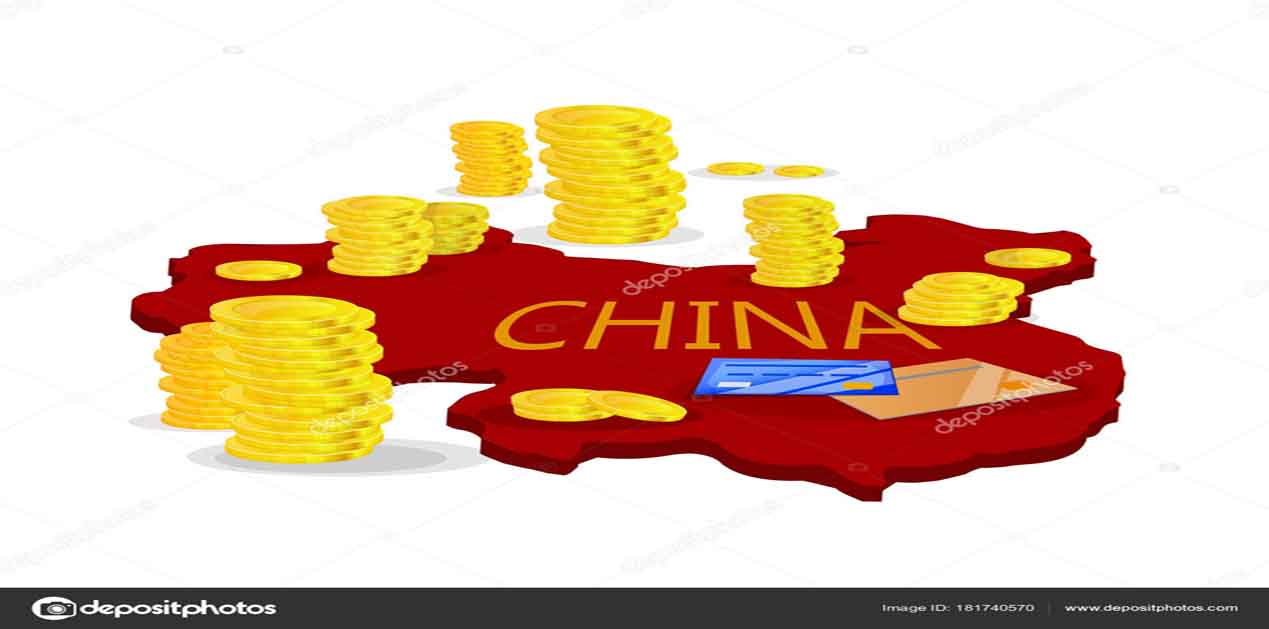Premier of the State Council of the People's Republic of China, Le Keqiang, while addressing the first session of the 13th National People’s Congress kept China’s Gross Domestic Product (GDP) growth at 6.5 percent for 2018, somewhat lower than the 6.9 percent growth attained in 2017.1 While delivering the Government work report, the Chinese Premier mentioned that it will enable China to relatively achieve full employment. The Government work report plans to open Chinese markets further to supplement higher-quality growth.2
International Monetary Fund (IMF) projections say that the Chinese Economy will grow at 6.6 percent.3 The Chinese slowdown has suddenly been put on pause as they posted a 6.8 percent growth rate in the third quarter (Q3) of 2017. China International Capital Corporation, one of the leading investment firms in China had raised their forecast for 2018 from 6.7 percent to 6.8 percent. The Chinese economy is expecting their first full acceleration since 2010.4
Consumer spending due to positive domestic and internal outlook may increase. It can be seen as the main growth engine for the Chinese economy to expand as two-thirds of the expansion in 2016 and 2017, mainly because of consumer spending. The financial markets in China are set to boom in 2018, as investors with around 20 Trillion USD worth of trapped assets in China will be looking at regular returns. This is based on the belief that Chinese Government’s discomfort with property prices and their belief that commodities rally over, will push the money towards stocks if benchmark interest rates are kept low.5
The Chinese success story might continue in 2018 assisted by the fact that it is rapidly advancing towards upgrading its manufacturing base and its internet industry and will help offset slower growth rates caused by lower investments in real estate and infrastructure. This growth will be backed by the Chinese Government, as it will market their deep-sea exploration technology and high-speed railway technology. The Chinese economy’s growth is also dependent on the possibility of global growth continuing to accelerate which would boost its exports. This possibility is dependent on the fact that China’s major trading partners are expected to have stronger growth and leading to a higher demand of Chinese exports.6
The Changes in Chinese Economy for 2018
The Chinese leadership, by the end of December 2017, had identified areas where the authorities have to fight ‘critical battles’ and have given themselves three years to sort out major issues. These major issues are financial risk, pollution, and poverty. The Chinese leadership under President Xi has vowed to fight a battle to prevent and resolve major risks, with a special focus on controlling and preventing financial risks, posed by shadow-banks unregulated credit and reducing regional debts. The Chinese seek to foster a “virtuous circle” between finance and the real economy. 7
President Xi, again on April 2nd while chairing the Central Committee for Financial and Economic Affairs, urged local governments and State Owned Enterprises (SOE) to speed up efforts to reduce debt as a part of the “critical battle” against Financial Risks. The Chinese leadership has made it clear that they are going to prioritise every problem that threatens economic stability. This is in response to the borrowing binge since the Global Financial Crisis of 2008 and debt that has ballooned to unsustainable levels. A part of this process is to crack down on shadow banking and tighten corporate lending conditions. China is seeking to shift its economy from debt-fueled expansion to higher quality output driven by consumer demand.8
The Chinese have decided to cut taxes worth 9.5 Billion USD to reduce the cost of entrepreneurship and innovation in order to bolster micro, small and medium enterprises.9 The new Governor of People’s Bank of China through various measures has freed up credit for the small businesses to access; and funding costs were lowered for small banks in response to President Xi’s drive to curb credit risk.10
President Xi wants better coordination between central and local governments as far as financial supervision is concerned. This coordination will help the local governments to be more responsible and accountable while dealing with financial risks in their region. The Chinese Government, however, is not focusing on significantly cutting debt but slowing its growth. The changes are directed towards dealing with the looming shadow banking problem of China and also reducing the household loans which are putting strains on the economy. President Xi appears serious about curbing SOE loans. In July 2017, Xi made curbing SOE borrowing “priority of priorities”. Financial regulations are tightened on the shadow banking system, off-balance sheet financing, internet finance, and financial group giants. The pressure of these changes is already on the financial group giants. The owner of Aanbang Insurance Group Corporation was arrested on the charges of “economic crimes”.11
Challenges due to these Changes
The issue which might come up later is that the regulations being implemented are mostly short-term solutions and do not address adequately the growing Household and SOE loans as well as the problem of shadow-banking.
A concern which a lot of economists share is that while China contributed nearly one-third of world’s growth in 2017, the numbers provided by the Chinese authorities is still a matter of concern, since it is the world’s second-largest economy. With President Xi declaring that China’s markets are open for business, credible numbers from the authorities are to be expected and to be shared with the world, which needs credible numbers. China’s one-party system and the centrally controlled economy, makes it convenient to start a major public works programme, in the event of an economic downturn. Such projects make it difficult for calculating the market that does not factor them in. This has led to the usage of various methods such as satellite imagery of factories in China and measure electricity use, rail cargo volumes to estimate economic output.12
Shadow-banking is still an area of concern for the Chinese authorities as outstanding assets of these banks are around 27 trillion Yuan (426 Billion USD), according to Bloomberg. The shadow banking sector’s outstanding stocks increased by 555 Billion USD because private companies have become reliant on these banks for refinancing with the slow down in credit supplies. 13
The real estate boom in China led to home prices in major cities like Beijing and Shanghai grow by 25 percent in the last two years, which has led to the value of mortgage rising to 22.9 Trillion Yuan (358 Billion USD) by the end of 2017. Much of this increasing household debt level is due to the housing bubble, which amounts to 59 percent of the total household loans. The rest is divided up between loans taken by small businesses and traders which are categorised by operating loans which stands at 22 percent, the remaining 19 percent is consumption loans such as credit card debts, car loans, etc. The total private debt stands at around seven trillion USD today, which has accumulated in the last ten years. Mortgage payments and other payments severely hamper Chinese domestic consumption, which President Xi wants to encourage.14
The problem with Chinese policy changes is that while they encourage new businesses and talk about openness, its main problem is how to deal effectively with a debt which rivals that of developed economies while China is still categorised as a developing country. The freeing up of credit to new businesses would mean more private debt in the form of operating loans. While President Xi calls for SOE’s to speed up efforts to handle their debt, the Made in China 2025 blueprint provides for SOE’s getting easy credit, tax breaks, subsidies, amongst other perks.15
The changes implemented on paper seem dynamic, and encourages more investments in China. However, it has to address the growing household debt. The drive to increase domestic consumption comes at a time when mortgage payments take up half of the earnings of an ordinary Chinese citizen. Moreover, pushing SOE’s to work on reducing debts and at the same time giving perks under the auspices of Made in China blueprint will not help in the current situation.
References
1. China’s 2017 economic growth fastest in two years at https://www.ft.com/content/9bf532a8-66de-37bf-b515-03589957ada4
2. China sets 2018 GDP growth target at around 6.5 pct at http://www.xinhuanet.com/english/2018-03/05/c_137017172.htm
3. IMF Data Mapper at http://www.imf.org/external/datamapper/NGDP_RPCH@WEO/OEMDC/ADVEC/WEOWORLD
4. Economists Press Pause on China Slowdown as 2017 Rise Foreseen at https://www.bloomberg.com/news/articles/2017-10-30/economists-press-pause-on-china-slowdown-as-2017-pick-up-forseen
5. China's Growth May Surprise Again This Year at https://www.bloomberg.com/news/articles/2018-01-03/china-s-economy-could-stem-slowdown-again-as-jpmorgan-upgrades
6. Ibid ii
7. China's Xi Turns Deleveraging Sights on Local Governments, SOEs at https://www.bloomberg.com/news/articles/2018-04-03/china-s-xi-turns-deleveraging-sights-on-local-governments-soes
8. Ibid iv
9. China announces tax cuts worth 60 bln yuan for innovative, small businesses at http://www.xinhuanet.com/english/2018-04/25/c_137136536.htm
10. China’s Central Bank Chief Kicks Off Reign With ‘Very Clever' Move at https://www.bloomberg.com/news/articles/2018-04-18/new-pboc-chief-kicks-off-reign-with-very-clever-reserves-move
11. How China Is Getting Serious About Financial Risk at https://www.bloomberg.com/politics/articles/2018-02-12/how-china-is-getting-serious-about-financial-risk-quicktake-q-a
12. China’s Economic Numbers Have a Credibility Problem at https://www.bloomberg.com/news/articles/2018-04-19/china-s-economic-stats-have-a-credibility-problem
13. China Still Has a Problem With Shadow Banks at https://www.bloomberg.com/news/articles/2018-01-17/china-s-talking-tougher-on-shadow-banking-and-the-data-show-why
14. A $7 Trillion Debt Pile Looms Large Over Chinese Households at https://www.bloomberg.com/news/articles/2018-04-24/the-7-trillion-debt-pile-looming-large-over-chinese-households
15. This Is China’s Real Economic Problem at https://www.bloomberg.com/news/articles/2017-07-13/this-is-china-s-real-economic-problem
(The paper does not necessarily represent the organisational stance. The author certifies that the article/paper is original in content, unpublished and it has not been submitted for publication/web upload elsewhere, and that the facts and figures quoted are duly referenced, as needed, and are believed to be correct).
Image Source: https://depositphotos.com/181740570/stock-illustration-chinese-economy.html











Post new comment